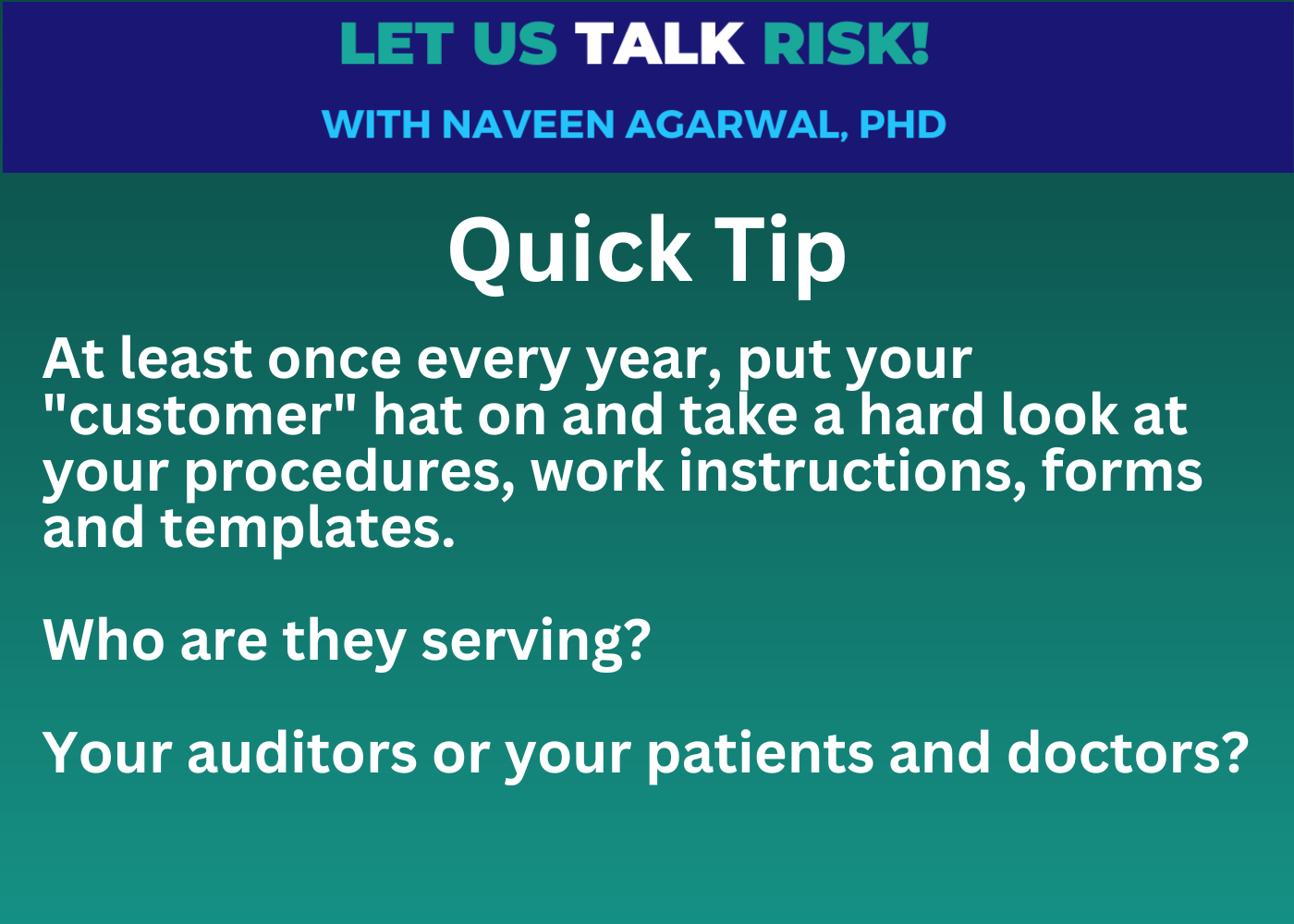Quick Tip: Focus on the customer not compliance in your procedures
When quality procedures focus too much on compliance, they inadvertently leave your customers behind.
Are we too focused on regulatory compliance in the medical device industry?
Yes, it is absolutely critical to be fully compliant with applicable regulatory requirements. But that is not the main goal of your Quality Management System (QMS)!
Did you know that one of the most common findings in audits is practice does not meet procedure, and not that procedure is non-compliant?
Complex procedures which require multiple forms and sign-offs may help you check the box for the purpose of compliance, but they also lead to a lot of wasted effort, mistakes and frustration. Those who do the actual work eventually find a way around official procedures to get the job done. This is why it is common to find many gaps between actual practice and written procedures. It is not that people want to deliberately break the rules; it is that they take the path of least resistance.
A common practice in the industry is to write procedures to mirror the language used in applicable regulations and standards. As a result, these procedures focus mostly on the what, and not the how of critical work processes. Simply requiring that all risks be reduced to as far as possible (AFAP) without negatively affecting the benefit risk ratio1 is not useful beyond indicating to your auditor(s) that your procedures are compliant with regulatory requirements.
At least once every year, it is a good practice to take a hard look at your procedures, work instructions, forms and templates. If procedures don’t make sense from a practical point of view, you should change them! This is how you will continually improve your QMS so that it helps you serve your patients and doctors rather than generating a lot of paperwork for compliance.
Check out this article to learn more!
When compliance leaves the customer stranded
Most air-travelers these days do not have high expectations. Still, when flights are cancelled under questionable circumstances and customers have to spend the night away stranded on an airport, the bitterness of the experience lasts a long time! Aviation is a heavily regulated industry. Customers are used to rules and procedures. Bad weather is always a…
AFAP is a requirement of EU-MDR - see General Safety and Performance Requirements in Annex I





